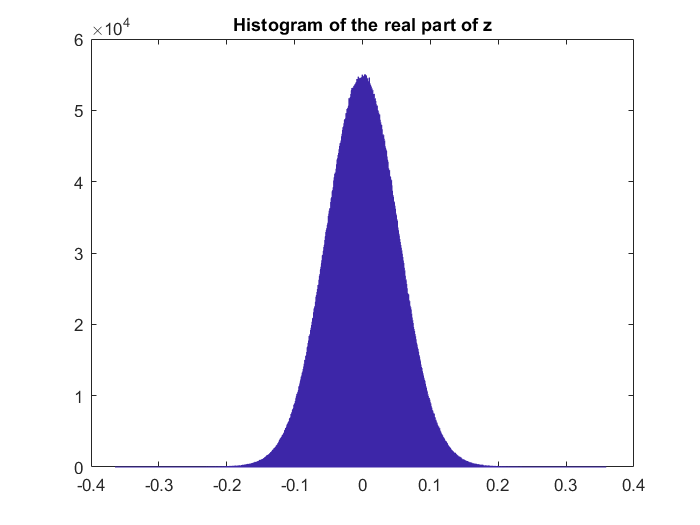What would be the distribution (p.d.f.) of the following ratio?
$z = \frac{x_{1}}{|x_{1}|^2 + |x_{2}|^2 + ... + |x_{M}|^2}$$$z = \frac{x_{1}}{|x_{1}|^2 + |x_{2}|^2 + ... + |x_{M}|^2}$$
where $x_{i} \sim \mathcal{CN}(0,a), \forall i$ and $a > 1$. As can be seen, the denominator follows a Chi-square distribution with $2M$ degrees of freedom as $x_{i}$ are i.i.d. R.V.s.
Remark 1: I've run some simulations in Matlab, as shown in the pictures below for $M$ = 10, and the resulting distribution has a bell-shaped histogram. Could it be that the resulting distribution follows one of these distributions: Gaussian/Cauchy/Student's-t?
Remark 2: This is a link to the Matlab/Octave script used to plot the pictures below. Matlab/Octave simulation of the histogram of z




